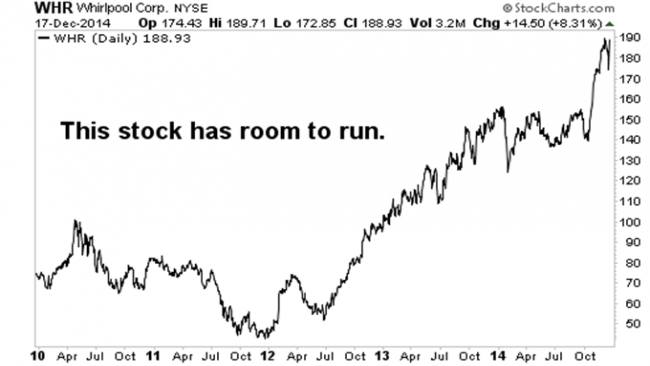Can A Stock Go Higher
Post on: 16 Март, 2015 No Comment

This stock has already gone up so far, it can’t possibly go any higher.
That phrase runs through my head every time I see a chart of some high-flying stock that’s gone up three-, five-, or tenfold. I remember thinking it with Starbucks in 1997, and over the past year with commodity stocks like agriculture chemical provider Mosaic ( NYSE: MOS ) and steel maker Nucor ( NYSE: NUE ). I’d often watch in disbelief as the stock I had doubted surged even higher.
Certainly, virtually every stock has been knocked lower recently. But watching stock prices gyrate during the recent volatility in the market won’t help you determine which ones will keep plummeting, or bounce back eventually. Thankfully, there’s a better way to look at stocks.
Don’t vote by chart
The problem I share with many other investors is this: It’s too easy to draw a conclusion from a chart and too time-consuming to take a deep look at the fundamental business behind any stock. Yet a stock’s past performance can’t tell you anything about where it’s going.
The same holds true for stocks that have really lousy-looking charts — a nose-diving share price doesn’t tell you anything about a company’s future. In fact, stocks that have suffered protracted falls may be the best opportunities out there, if the fundamentals say so.
For instance, looking at the chart of soup-to-nuts maker Campbell Soup would make you queasy: The stock lost about one-quarter of its value in early 2003. PepsiCo looked much better — it topped the S&P during that time. PepsiCo’s spinoff of its low-margin bottling group in 1999 helped maintain growth to keep it in the black.
But reforms at Campbell had already reversed the trend of declining net income in 2003 as the company refocused operations. These companies had very different historical charts, but by early 2003, each had the fundamental drivers in place for future growth, and both have since returned more than 60%.
Great stocks, great companies
A company’s stock may be volatile even over extended periods, meaning that business fundamentals are a better gauge of future results than past stock performance. Take a gander at some companies with charts beating the pants off the market in the past five years:














